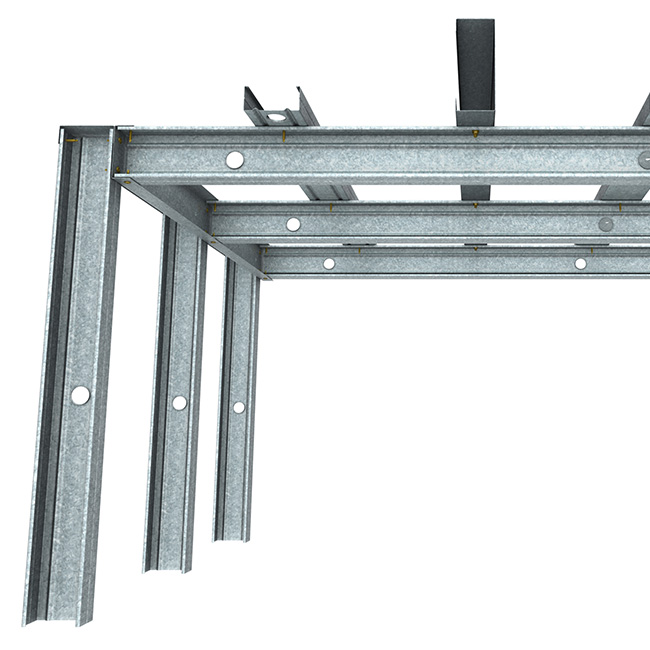You can download our Steel Stud Ceiling System Span Tables for details of single or continuous spans, and single or boxed studs. The span tables also show the minimum rows of bridging based on ceiling span and lining condition (lined one side). Bridging in a ceiling serves the same purpose as Noggings do in a stud wall.
Rondo Steel Studs can also be used for ceiling bulkheads where a drop greater than 600mm makes it is hard to use our Furring Channels.
To carry the additional layers of plasterboard and framing members, bulkheads require independent suspension. You can do this by, fixing the framing directly to the structural soffit or providing additional suspension hangers to the bulkhead.
Not to mention, all bulkheads require bracing to provide lateral stability to the framework during incidental loading.
In a nutshell, this means stud bracing needs to be fixed diagonally between the bulkhead framework and the structural soffit at regular intervals, or alternatively, by rigidly coupling the ceiling to the bulkhead.
In fact, ceiling Friction Joints using Steel Stud allow for movement of building elements and Mechanical Joints are needed where the maximum spans of the ceiling exceed those allowable for Friction Joints, or where a more positive connection is required.








